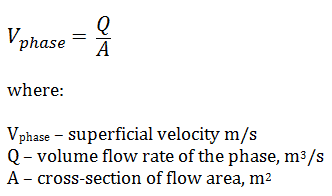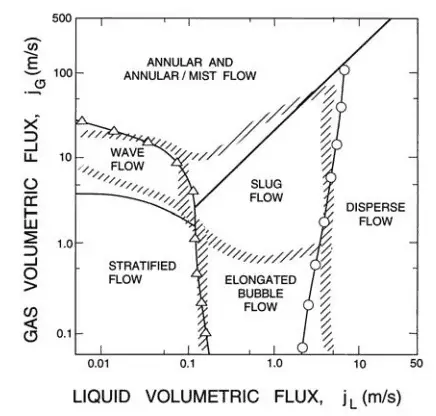Basic Parameters of Two‐phase Fluid Flow
In this section we will consider the simultaneous flow of gas (or vapor) and liquid water (as encountered in steam generators and condensers) in concurrent flow through a duct with cross-sectional area A. The subscripts “v” and “ℓ” indicate the vapor and liquid phase, respectively. Fundamental parameters that characterize this flow are:
Superficial Velocity
Superficial velocity is a hypothetical flow velocity calculated as if the given phase or fluid were the only one flowing or present in a given cross-sectional area. The velocity of the given phase is calculated as if the second phase was ignored.
In the engineering of multiphase flows and flows in porous media, superficial velocity (Vphase or jphase) is commonly used because it is the value that is unambiguous. In contrast, real velocity is often spatially dependent and subject to many assumptions.
Superficial velocity can be expressed as:

For better understanding, let us consider a pipe with a 0.1 m2 cross-section of flow area. Assume that the flow rate is 1 m3/s. For single-phase fluid flow, the superficial velocity will be equal to real fluid velocity, which will be 10 m/s.
For two-phase fluid flow (e.g.,, vapor-liquid flow), the situation will be different. Assuming the slip ratio is unity, both phases have taken separately, will have superficial velocities of 5 m/s. The resulting real velocity will then be equal to 10 m/s. If the two phases have different velocities (with slip), the situation will be more complicated.
